Costa Mesa man’s technology went to the moon and back throughout the Apollo era
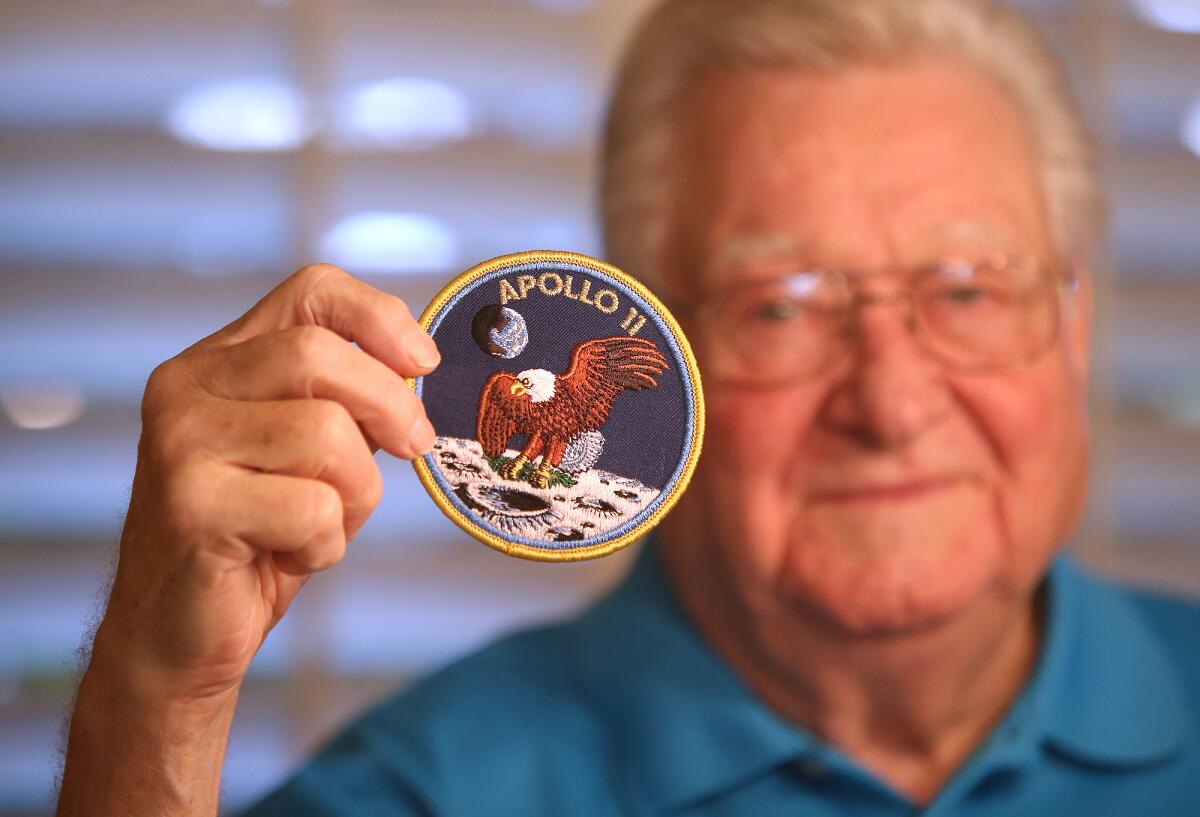
Jerry Florey was part of the crowd at Kennedy Space Center on Nov. 14, 1969, to watch history continue to unfold.
American astronauts were going back to the moon on the Apollo 12 mission for the second lunar walk, four months after Neil Armstrong became the first human to set foot on its surface.
For the record:
4:32 p.m. Aug. 4, 2019Apollo 11 lifted off July 16, 1969, on the way to the moon landing four days later. A photo caption with this article originally listed the launch date incorrectly.
Then, Florey heard his name over the loudspeaker.
The Saturn V rocket that was to launch the crewed module might not be able to lift off. The engineers on duty had problems loading the liquid propellants. Could he troubleshoot and get the men to the moon?
Florey wasn’t an audience volunteer — he was an engineer himself. Though not on duty that day, he had been for all the prior Apollo launches and had contributed to the design and development of the liquid hydrogen/oxygen rocket engines used on the Saturn V.
Quickly, he wrote up a plan to methodically tank the propellants, and his colleagues followed it. Then he went back outside to observe the launch and felt its concussive power.
“I guess they had confidence in me and confidence in themselves to [follow] what I wrote,” he said.
It really was rocket science.
The excitement and intrigue of the space race, which peaked 50 years ago with the first moonwalks, lives on in Florey, an 87-year-old Costa Mesa resident who has lived in the same Mesa Verde split-level home since 1968.
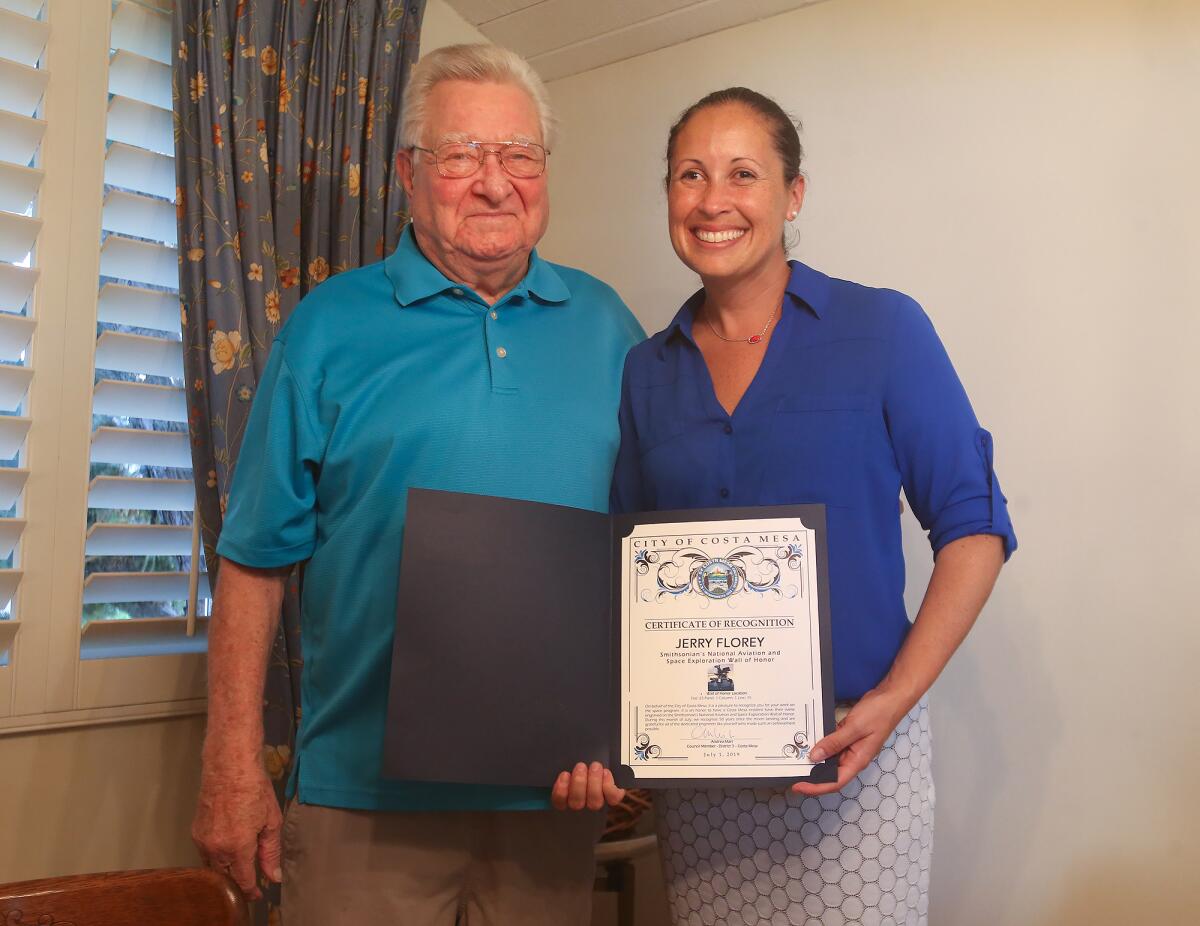
He was on the ground floor of outer space. The mementos that fill his home prove it: a map of the moon, with orange dots where Apollo crews landed; models of a Saturn V rocket, a J-2 rocket engine and a lunar module; and a stack of commendations from NASA, including a Silver Snoopy — a rare award presented by astronauts to employees and contractors for their contributions to space flight.
Florey worked at the propulsion console on 16 missions throughout the Apollo era — not counting when he helped get Apollo 12 off the ground that day in 1969 — and supported crews in Florida and Texas.
Seeing a “geeky-looking guy” at the launch center get screen time alongside the charismatic leads in the 1995 film about the nearly ill-fated Apollo 13 gave him goosebumps, he said. That was someone like him.
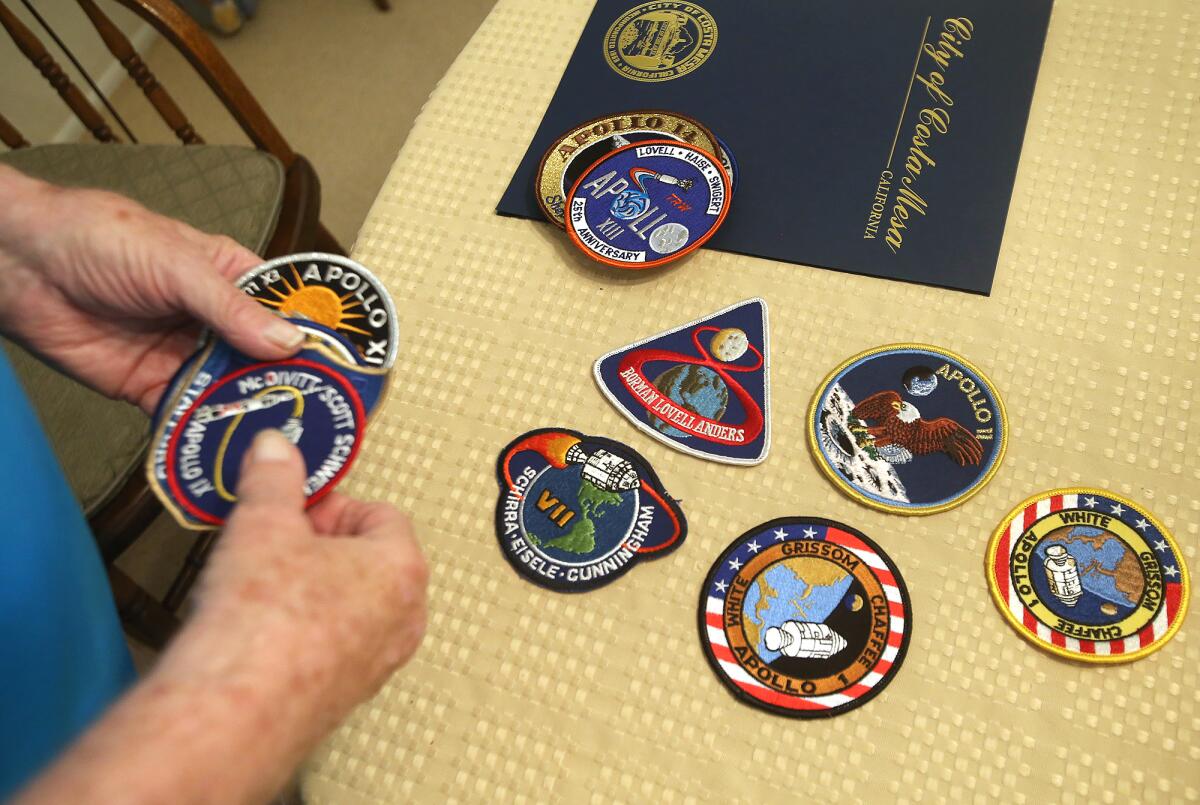
As a boy growing up in McMinnville, Ore., in the 1930s, Florey listened to “Flash Gordon” and “Buck Rogers in the 25th Century” on the radio. One of his sisters encouraged his interest in science — real science, not science fiction — which took him to Oregon State University’s chemical engineering department.
He earned a bachelor’s degree in 1955 and went to work at Union Oil in San Francisco, but didn’t last long there. He and his new bride — his college sweetheart, Mary — couldn’t afford a decent apartment in the city. They set out for the Los Angeles area, where they had friends in Lancaster, and a plucky Jerry landed a job with Rocketdyne’s Santa Susana Mountains rocket engine test facility.
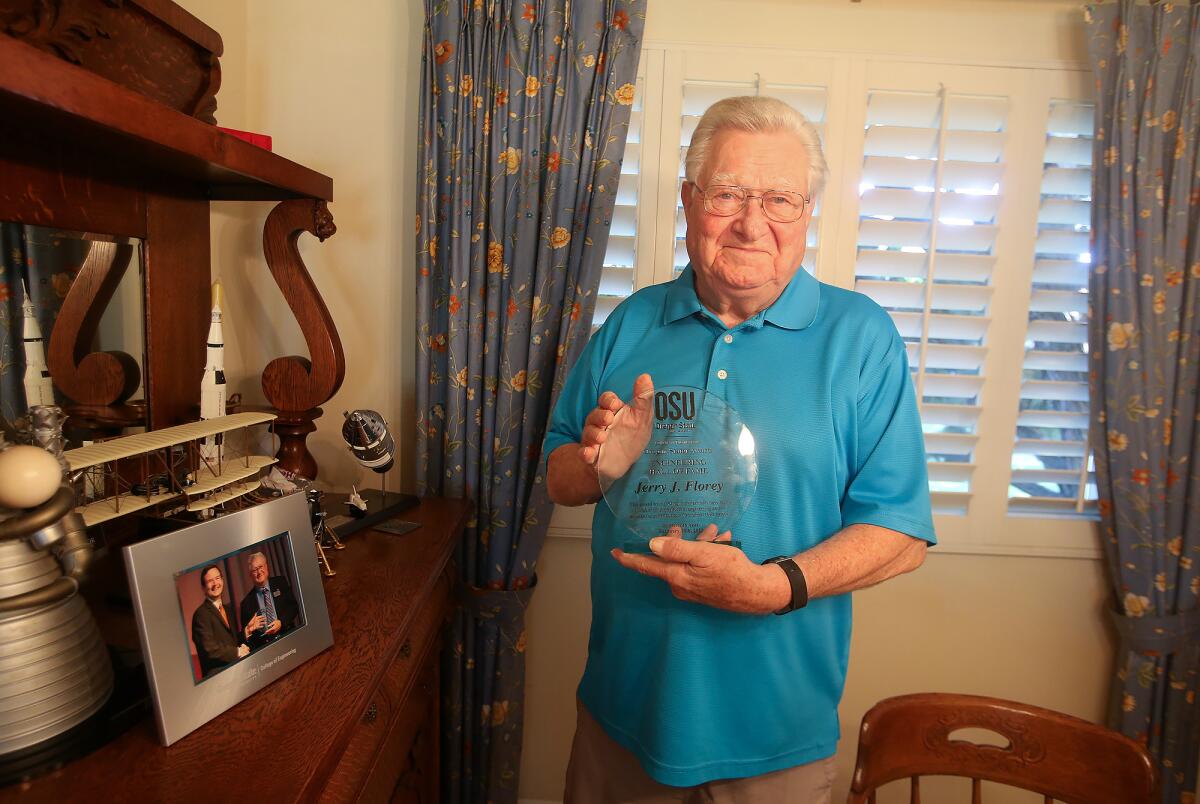
By the time the young Florey family — Jerry, Mary and their two children — moved to Costa Mesa, he was working at the Rocketdyne (later Rockwell International) office in Seal Beach. Costa Mesa was what he could afford. He commuted on a two-lane Pacific Coast Highway.
Now, his name is engraved on the Smithsonian’s National Aviation and Space Exploration Wall of Honor in Virginia. He’s a member of the Oregon State Engineering Hall of Fame. His certificate from the 2000 edition of “Who’s Who in Science and Engineering” hangs on a wall across from his lunar map.
Costa Mesa City Councilwoman Andrea Marr, who has a degree in aerospace engineering from the Naval Academy, added to his haul Wednesday with a certificate from the city.
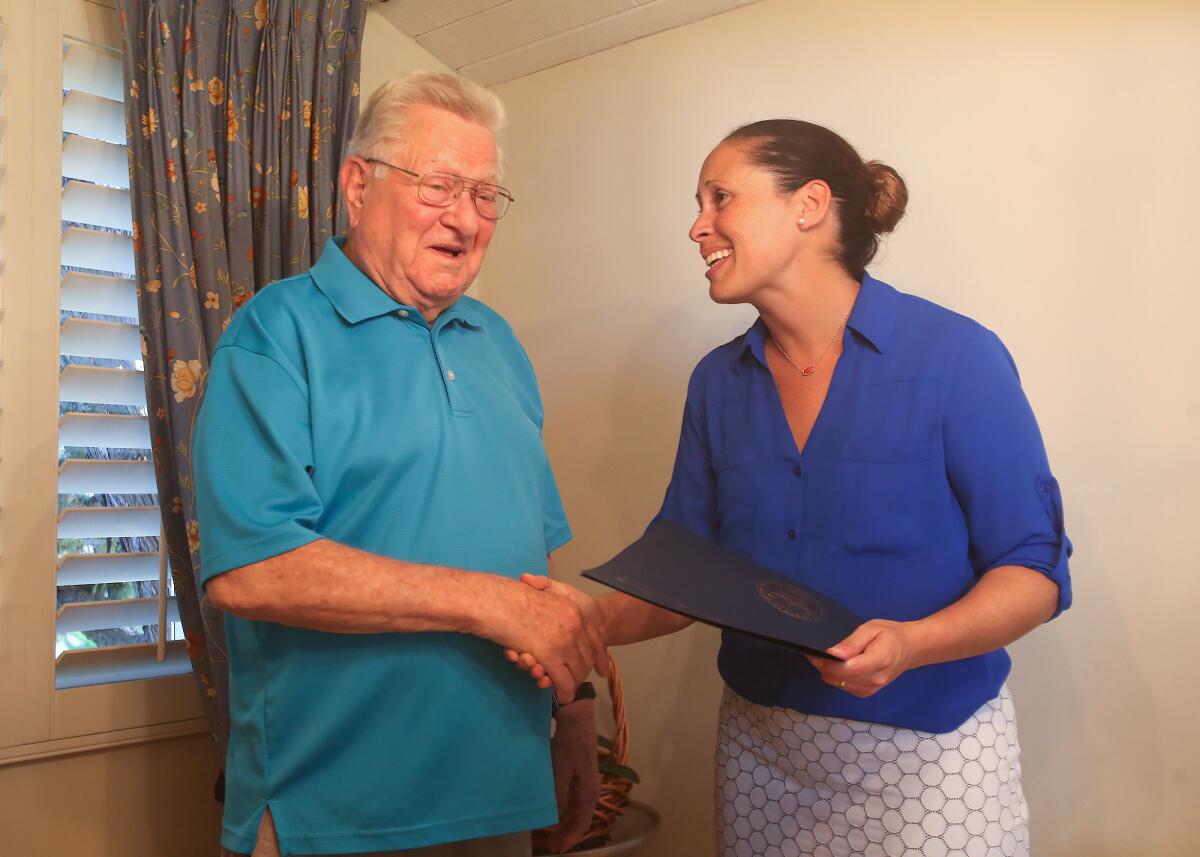
“We’re honored that you’re a resident,” she told him.
In addition to the Apollo program, Florey’s work has touched on ballistic missiles, Skylab, which preceded the International Space Station, and some classified projects. He retired as a senior staff manager in the space transportation division at McDonnell Douglas, now Boeing Co., in Huntington Beach.
Florey was only in his 30s during the Apollo era. Engineers who dedicated themselves to then-emerging rocket science and astronautics were a young, tight-knit and indefatigable group, he said.
Looking back, though, he said he couldn’t have done it without Mary — to whom he proposed by telephone from a phone booth on San Francisco’s Hyde Street. It’s Mary who has preserved his commendations and articles in a box under their bed.
“Anything that I achieved and became recognized for, she’s been a teammate of mine,” he said.
Humans haven’t ventured beyond low-Earth orbit since Apollo 17 in 1972, but Florey’s convinced that won’t be the last journey to the stars.
“Someday,” he said, “they’ll get to Mars.”
All the latest on Orange County from Orange County.
Get our free TimesOC newsletter.
You may occasionally receive promotional content from the Daily Pilot.




